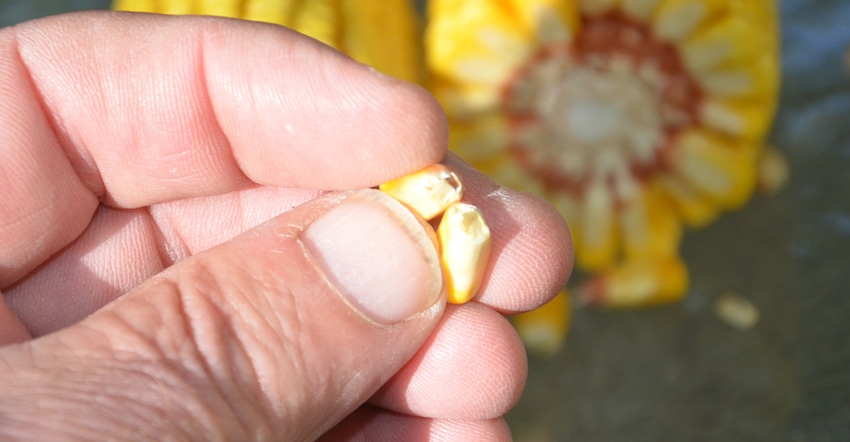
Normally when Dave Nanda walks through a cornfield in early to mid-September, he is anxious to shuck an ear, pull back the husks and split the ear in half. Then he plucks out a kernel, pulls out his pocketknife and, looking like a surgeon, gently pecks at the tip.
“I’m trying to determine if the black layer has formed,” Nanda says. “That’s a big deal for a corn plant, because if I find the black layer, it means the kernel is physiologically mature. It’s safe from frost. The plant has done its job and produced viable kernels. It doesn’t know that these kernels produced by hybrid corn won’t be planted.”
Nanda, director of genetics for Seed Genetics Direct, says reaching black layer is also an important milestone for growers. “Knowing that the corn is safe from damage by frost or a freeze won’t likely be a big deal this year, but it is in some years, at least for late-planted fields,” he notes. “Two years ago, in 2019, it was a big deal for many people. Since corn was planted late in 2019, many fields didn’t reach black layer until early to mid-October. Usually, most fields reach black layer in early to mid-September.”
Black layer and moisture
Black layer means kernels are mature, but it doesn’t mean they’re dry enough to harvest, depending upon when you like to begin harvesting, Nanda says. The Purdue University Corn & Soybean Field Guide says corn can range anywhere from 25% to 40% moisture at black layer. Nanda has found that moisture typically ranges from 30% to 35% when he finds that the black layer has formed.
Technically, according to the Purdue guide, physiological maturity occurs 55 to 65 days after the R1 stage begins. Kernel dry weight reaches its maximum. The milk line — which progressed from the dent end of the kernel to the tip during the R5, or dent, stage — disappears, and then the kernel black layer forms. The black layer is a thin layer of cells that die, collapse and close the end of the kernel.
“Nothing can be transported in or out from the kernel after the black layer forms,” Nanda says. “The kernel has all the starch and weight it is going to have at that point. The good part is that even if severe stress occurs after that, you won’t lose yield. The only real way to lose yield after that is if insects, disease or a windstorm compromises the stalk.”
Finishing the season
Suppose you are checking ears and you’re not finding a black layer yet. How long before the black layer will form?
If you have a late-planted field in the dough stage, or R4, a chart included in the Purdue guide indicates you would need about 37 calendar days or 602 growing degree days to reach black layer. However, if corn is in the dent stage, or R5, with the milk line moving down toward the tip, you should only need about 20 days or around 300 GDDs to reach black layer.
About the Author(s)
You May Also Like




